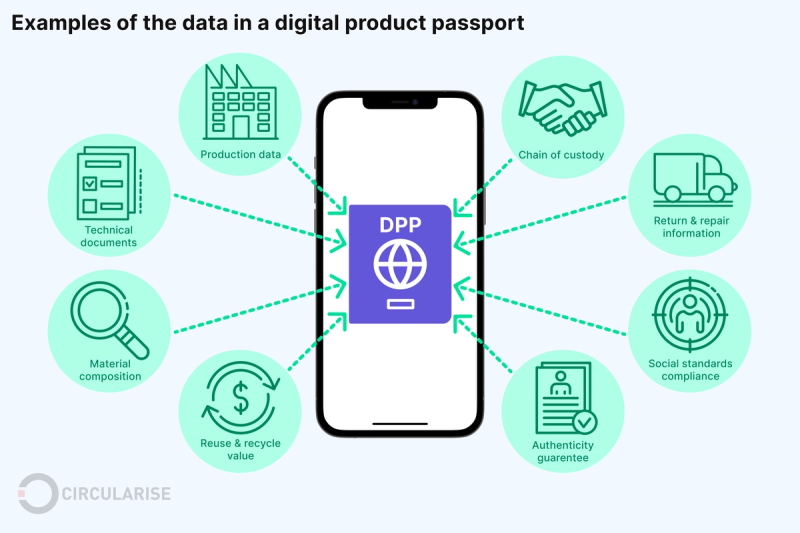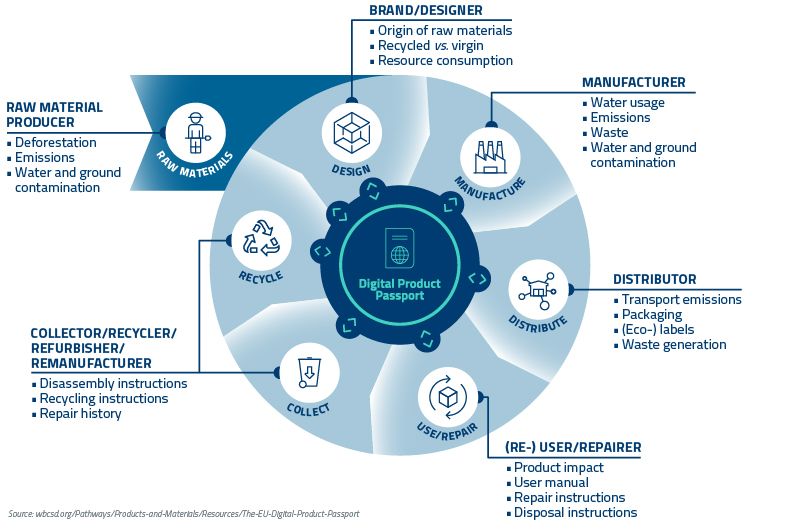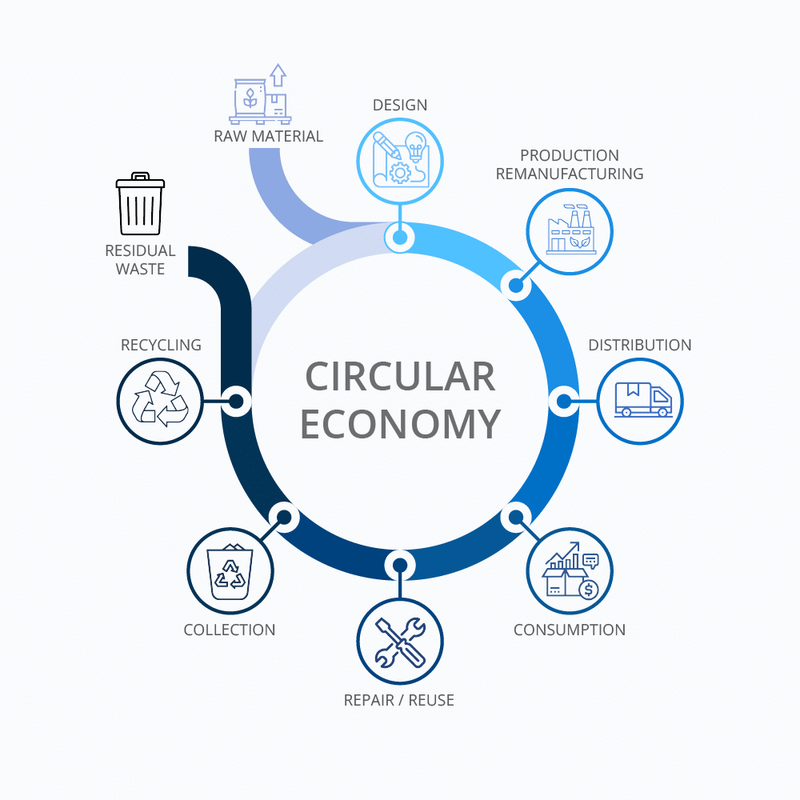The Digital Product Passport: Promoting Sustainability and Transparency in the Supply Chain
The Digital Product Passport: Promoting Sustainability and Transparency in the Supply Chain
Imagine being able to scan a product and instantly access its complete lifecycle story - from the source of its raw materials to how it can be responsibly disposed of or recycled. This is the vision behind the Digital Product Passport (DPP), an innovative tool that aims to foster greater transparency, sustainability, and consumer awareness.
The DPP is a cornerstone of the European Union’s strategy for a circular economy, providing a digital repository of data to inform better decisions at every stage of a product's life. This initiative promises to benefit consumers, manufacturers, and the planet alike.
Get in touch

Main section
Quick facts
/
EU Mandate: The European Union aims to introduce the DPP across industries by 2026
/
Traceability: a DPP will include data on material sourcing, production processes, and recyclability
/
Consumer Benefits: Offers transparency to consumers about the environmental impact of their purchases
/
Boosting Circular Economy: Facilitates reuse, recycling, and repair of products
How the Digital Product Passport is Reshaping the Marketplace
The Digital Product Passport (DPP) is not just another technological advancement; it is a game-changer for how we interact with products in the marketplace. Rooted in the European Green Deal and the Circular Economy Action Plan, the DPP seeks to make products more sustainable by ensuring they carry essential information about their lifecycle.

At its core, the DPP is a digital record that can be accessed through a QR code or similar technology. This record contains detailed information, such as:
- Raw Material Origins: Ensuring traceability back to ethically and sustainably sourced materials.
- Manufacturing Processes: Transparency into energy consumption and emissions during production.
- Usage and Maintenance: Tips to extend product life through proper care.
- End-of-Life Options: Clear guidelines for recycling or repurposing.
Empowering Stakeholders
For consumers, the DPP demystifies products by revealing hidden details that influence their purchasing decisions. For example, an electronic device might include information on whether it uses conflict-free minerals or if its components are easily recyclable.
Manufacturers, meanwhile, can leverage DPPs to align with stricter regulatory requirements and improve their green credentials. This transparency fosters trust and loyalty among eco-conscious consumers.
Regulators also stand to benefit. The DPP offers a standardized way to verify compliance with environmental and ethical standards, reducing the risk of greenwashing and encouraging genuine sustainability.

Enabling a Circular Economy
One of the most exciting aspects of the DPP is its role in enabling a circular economy. By providing detailed data, it simplifies the process of repairing, refurbishing, or recycling products. This not only minimizes waste but also reduces the demand for virgin materials—a critical step toward decarbonizing industries.
Bottom section
A Future Beyond Compliance
The adoption of the Digital Product Passport signals a fundamental shift in how we perceive and interact with goods. Beyond compliance with EU regulations, it presents an opportunity to redesign industries for sustainability. While challenges remain, such as ensuring data security and standardization across sectors, the potential benefits far outweigh the hurdles.

Looking forward, the DPP could inspire global adoption, making transparency and sustainability the new norm in international trade. By educating consumers and empowering industries, this innovative tool is more than a regulatory requirement - it’s a step toward a cleaner, greener planet.
Background Information:
You can read a lot more about DPP. Here are some of our recommendations:
- Ecodesign for Sustainable Products Regulation (the DPP as a key component of ESPR)
- Digital Product Passport: The Complete Guide (Protokol)
- Current approaches to the digital product passport for a circular economy: An overview of projects and initiatives (a Wuppertal Institut paper)
- Digital Product Passport, a Blockchain-based Perspective (an EU Blockchain Observatory and Forum report)
- How to get started with the Digital Product Passport (a mini video series by Kruso and DynamicWeb)
- 10 Examples of Digital Product Passport-like Initiatives (Bluestone PIM (Product Information System)
At Howest Cyber3Lab, we are researching this important trend and technology.
Contact us by filling our our "get in touch" form if you are interested to explore DPP and see how it can be applied to achieve sustainability and transparancy in your company's supply chain.
Contributors
Authors
/
Patrick Van Renterghem, AI, CyberSecurity, Web3, Immersive Tech, Quantum, ... Community Builder
Want to know more about our team?
Visit the team page
Last updated on: 3/24/2025
/
More stuff to read




